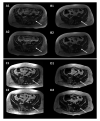Rechallenge of denosumab in jaw osteonecrosis of patients with unresectable giant cell tumour of bone: a case series analysis and literature review
- PMID: 32661185
- PMCID: PMC7359187
- DOI: 10.1136/esmoopen-2019-000663
Rechallenge of denosumab in jaw osteonecrosis of patients with unresectable giant cell tumour of bone: a case series analysis and literature review
Abstract
Objectives: Giant cell tumour of bone (GCTB) is a rare tumour, generally managed with surgery. Treatment of the very rare unresectable advanced/metastatic GCTB is challenging and denosumab is the only current available medical option, an anti-RANKL monoclonal antibody inhibiting osteolysis. An uncommon but severe and treatment-limiting adverse event of denosumab is the osteonecrosis of the jaw (ONJ). The clinical management of GCTB patients stopping denosumab for medication-related (MR)-ONJ and the possible reintroduction of denosumab after MR-ONJ resolution is matter of debate. We performed a retrospective study to describe the incidence, clinical features and outcome of MR-ONJ in unresectable GCTB patients treated with denosumab at our Institution.
Design and setting: Retrospective, single-institutional study.
Participants: Adult patients receiving denosumab as antineoplastic therapy for GCTB and experiencing MR-ONJ at Fondazione IRCCS Istituto Nazionale Tumori of Milan between January 2008 and July 2019.
Main outcome measures: Incidence, time of onset and clinical features of MR-ONJ.
Results: 29 patients with locally advanced and/or metastatic GCTB treated with denosumab were identified. At a median follow-up of 70 months (range 1-125), 4 (13.8%) patients experienced MR-ONJ while on treatment, after 125, 119, 85 and 41 months of denosumab, respectively. All patients showed an ongoing tumour stabilisation with denosumab at the MR-ONJ onset and in all cases denosumab was stopped. All four patients were treated with ozone therapy. Two are waiting for surgery, two were already operated on. Both of them experienced disease progression and were thus rechallenged with denosumab. One is still on therapy after 25 months. The other had an MR-ONJ relapse after 39 months and was treated again with ozone therapy and surgery. She is under surveillance, GCTB being currently stable.
Conclusion: A clinical algorithm of denosumab rechallenge after complete resolution of MR-ONJ in progressing GCTB patients should be prospectively validated.
Keywords: denosumab; giant cell tumour of bone; osteonecrosis of the jaw; ozono therapy; surgery.
© Author (s) (or their employer(s)) 2020. Re-use permitted under CC BY-NC. No commercial re-use. Published by BMJ on behalf of the European Society for Medical Oncology.
Conflict of interest statement
Competing interests: SS, AMF, AR, NS: institutional research funding from Pfizer, Novartis, Glaxo. PGC: grants and personal fees from Bayer, Glaxo, Novartis.
Figures


References
-
- Jaffe H, Lichstentein L, Portis R. Giant cell tumor of bone. its pathological appearance, grading, supposed variants and treatment. Arch Pathol 1940;30:993–1031.

